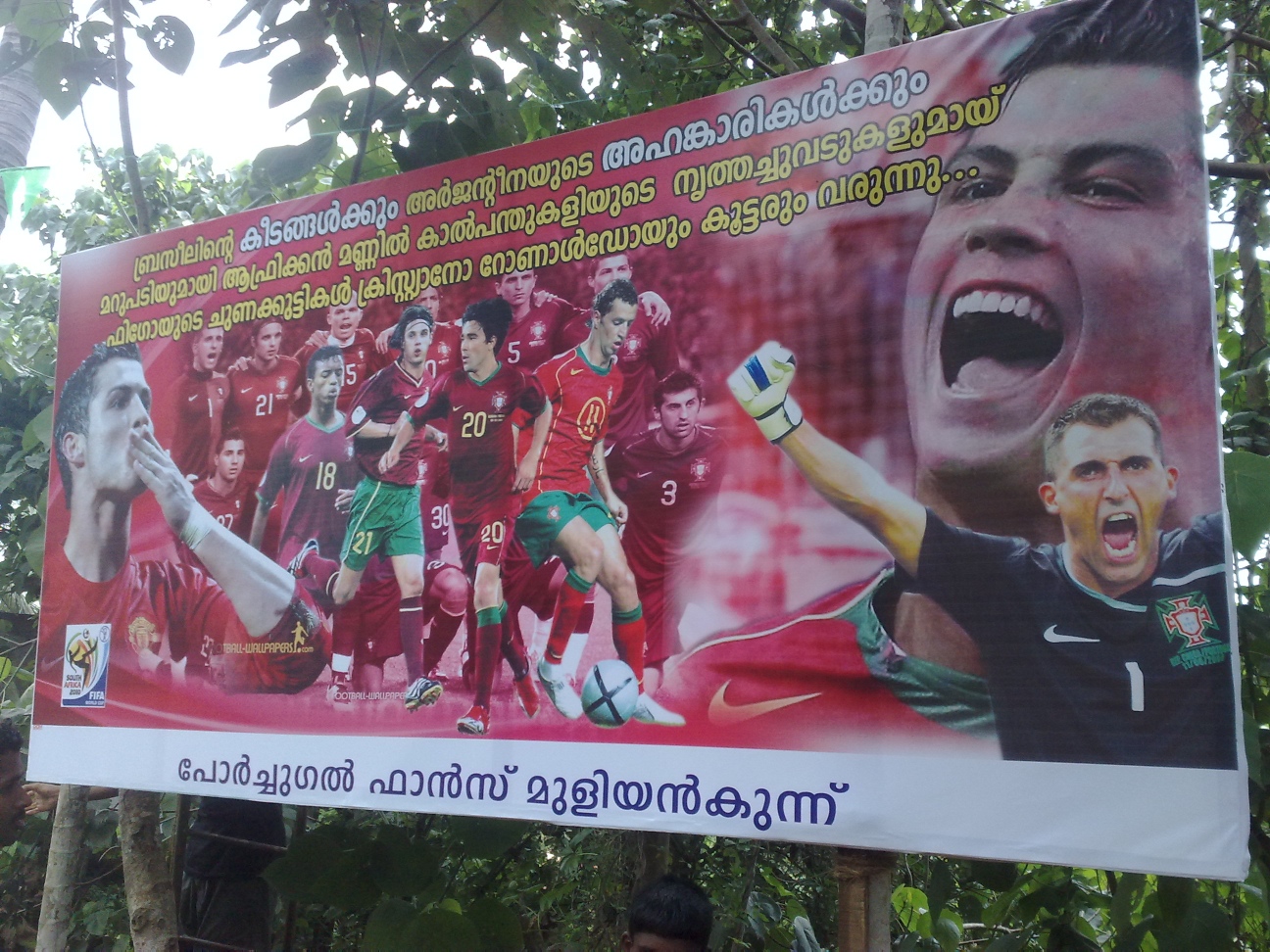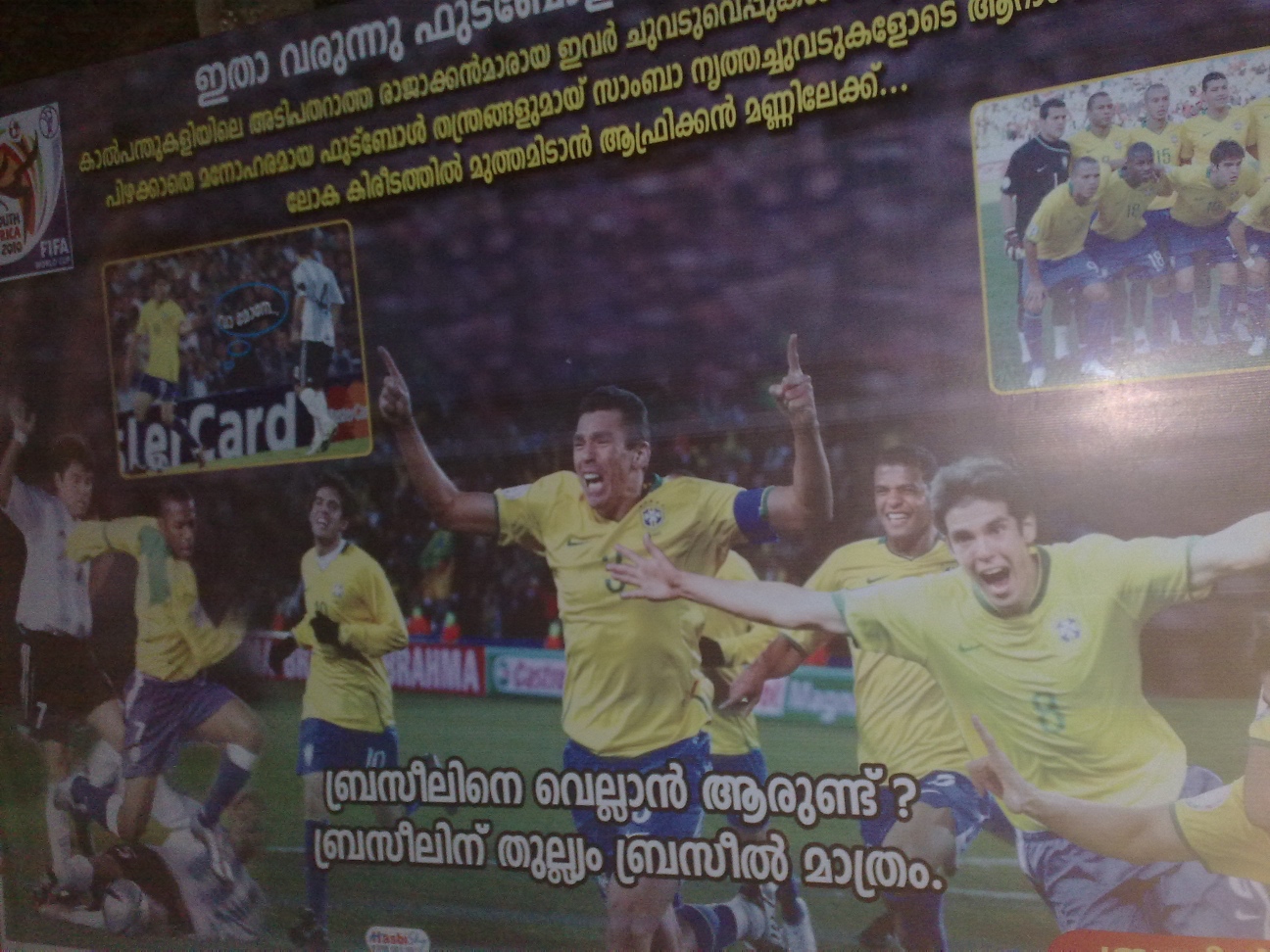A shot flew over the bar. The goal keeper showed great urgency in collecting the ball from behind the goal. Instead of kicking it forward, he pushed the ball gently out to the centre back. As the opposition forward streamed forward to close him down, the defender moved the ball swiftly and pushed it to the right back who was level with the penalty box. Another push and the central mid fielder was brought in to the play. A through ball to the left found the player on the left wing and as the opposing right back zoomed in to focus, he played it back to his left back. As the left back controlled the ball, his team repositioned themselves to start from scratch all over again. To build from the back.
If you have watched football in the recent past, you would recognise a pattern here. You would see the unmistakable Barcelona blueprint. Except that I am not describing Barcelona. Not even Spain. In fact when the initial shot flew over the bar, there was no collective sigh of relief from a crowd [packed till the heavens](“http://mkbarcelona.files.wordpress.com/2011/03/200311-005.jpg"), there was no eager ball boy to throw the ball back at the keeper and there was no one in the dug out shouting instructions at the players. Hell, there was not even a dug out near the touch line. The keeper ran to the construction site where the ball had found it’s way through and ran back all the way to get the play restarted. As he was still was running back, the left back of my opponents walked back to his position, his face embellished with a smile bore out of his pride of having bent his shot around the cashew tree inside the ground.
This place is home. As I run back to my own position of a centre back, I realize that my heart is beginning to swell with pride and my mind with perspective.
I have come home to Kottakkal to celebrate Eid-ul-Fitr and find myself in the middle of this engrossing contest. I grew up here and know almost all these lads since I was a kid. The change in their playing style and more importantly what they appreciate and look for in a player is astronomic.
Kottakkal is in Malappuram, one of the handful of football crazy islands in a sea of Cricket named India. I am immensely proud of the fact that I was born and raised here and learned to play football here.

Malappuram loves football and that is a proper understatement. Makeshift stadiums on paddy fields attract 10k+ crowd during the hot summer. People attend weddings wearing their football team shirts. Being able to play football well is a matter of pride and local enterprises spend a lot of money to sponsor local tournaments and local teams. There are people who have never flown a flag of India, but who decorates the streets with their favourite football team’s flags. Family connections are forgotten and friendships are forged based on what teams people support. 12 foot cut-outs of players adorn streets when major tournaments are around the corner. Elderly men discuss the role of a withdrawn forward while sipping glasses of tea in tea shops.

People of Malappuram madly love Brazil. While there is a significant minority that subscribes to the other Latin American school of football hailing from Argentina and there does exist pockets that adore the Italians, the Germans, the Portuguese and the English, Brazil is king. The fans of Brazil in Malappuram are large in number, immensely proud and deafeningly vocal. The Brazilian way of playing is revered and kids copy moves and fashion their game around Brazilian legends.

But one can not escape the growing feeling that things are changing. While it would be ridiculous to even suggest that Brazil’s fan base in Malappuram is eroding, people are moving away from the Brazilian style. Announcements through the tannoy for tournaments mention tiki-taka more than they mention the samba, the wee lad on the left who threads in delicious through balls forward would rather be called Iniesta than Kaka and when you are leading the game, you openly announce that your team is going to perform tiki-taka till the opposition catches up.
This change in style has been brought up by two independent events. As you guessed correctly, the first is the astronomical rise of the all conquering, beautiful Barcelona way. The second, and less obvious factor is the abandonment of the Brazilian way by none other than the likes of Brazil’s former coach Dunga.
Brazil of the yesteryears were pleasing on the eye and effective. This added with the opportunities to watch the best of Brazilian talent strut it out in Europe made the powerful style the accepted style in Malappuram.
Dunga’s Brazil played a brand of football that was effective, but not necessarily pleasing on the eye. He deployed two screening midfielders in front of the back four and sought to control the game rather than go out and go for the neck. There are arguments, no less from the great Jonathan Wilson that Brazil had been playing with this safety first approach for a long time now. However under Dunga, Brazil played with a level of pragmatism that had not been seen from them before. This is symbolised by Dunga’s use of Felipe Melo a tenacious, hard tackling, no nonsense defensive midfielder. Melo and Brazil beat most of the teams that came across their path and went on to win the Copa America. Brazil started grinding out results, although it has to be said that their graft looked more beautiful than watching some of the lesser teams like England trying to grind out a result. Brazil were no longer exciting to watch. This would go on till Dunga’s departure after a Dutch team who were more organised than them and showed more desire knocked them out of the World Cup in 2010. Incidentally, Felipe Melo was sent off in that match.
Meanwhile in Catalonia, a master named Pepe Guardiola had assembled a team that was mighty effective, beautiful and had the neutrals purring with admiration. Barcelona was in vogue and the definition of beautiful football in Malappuram changed gradually from Brazilian flair to the measured, controlled infusion of the right amount of passing, pressing and possession. Through balls, or “passing the ball to space” as Xavi Hernandez would have you believe became more valuable than step overs. People demanded passes from goalkeepers instead of a kick forward. Brazil fans started grudgingly accepting the fact that the Barcelona way was beautiful. The effectiveness of the Barcelona way was something you could not doubt, evidenced by their steam rolling of everyone in sight. On the other hand, effectiveness of the Dunga way was questionable after the World Cup exit.
While there is a quantum shift in playing style and appreciation, Brazil is still the most popular team. Despite their love for the Barcelona way, fans of Brazil continue to be fans of Brazil. Kids go out to the paddy fields and laterite rockbeds and play in the Bercelona way but when they come back, they huddle in front of TVs and cheer for Brazil. After all, if there is one thing worse than inglorious performances from one’s team for a football fan, it is the shame of having to switch allegiances.